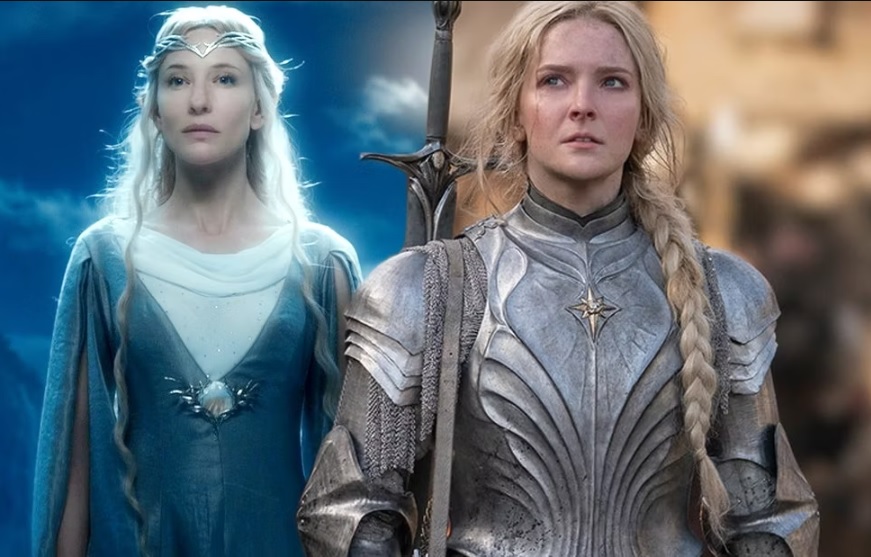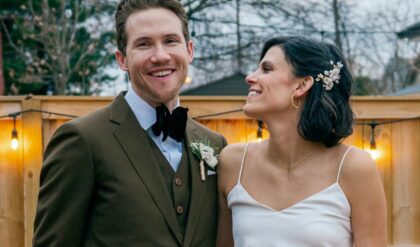‘The Rings of Power’ recently premiered its second season, and while the initial reactions were good, the overall consensus is that the show did little to improve upon the mistakes of the first season while adding some of its own problems to the mix. The viewership for the first three episodes of the second season is abysmal, and that likely doesn’t spell a bright future for the show overall, but you can’t say that ‘The Rings of Power’ did absolutely everything wrong.

We decided to analyze the show when compared to Jackson’s movies, and well, in some aspects, it thrives and in some, it falls ridiculously short. Let’s see.
1. The timeline

The main and original challenge for the series is that Tolkien never wrote a dedicated book about the Second Age, and the production lacks the rights to the book in which he covered it most extensively. As a result, the show is not that accurate when it comes to canon. The show tried to compress thousands of years into a much smaller time frame, and in some aspects, it made sense when it comes to human characters, but in some, it confuses viewers regarding certain storylines and how much impact they actually had on the story overall.
‘The Lord of the Rings’ movies cover a much much smaller timeframe which resulted in maximal accuracy and minimal confusion.
There are a lot of inaccurate and confusing stuff in the show, unfortunately, this piece can be only so long…
2. Galadriel is radically different

This was the first beef that the fans had with the showrunners, Galadriel is made, well, something she is not. In the original trilogy of movies, Galadriel is portrayed as a wise, ethereal, and powerful Elven leader with a serene and almost otherworldly presence. – the keyword being serenity. She is benevolent and compassionate and has that matronly aura around her.
‘The Rings of Power’ made Galadriel into a brash and foolhardy character, someone who shoots and asks questions later. She is not that wise and doesn’t have good self-control in the show. While Galadriel was described as “powerful” in the books, she was never mentioned to be a kickass warrior. She should have never been the lead of the show. There are also some aspects of her character that weren’t referenced at all. Galadriel was married to Celeborn and had a daughter, Celebrían, during that timeline—a fact not even acknowledged in the show. This leads us to…
3. The romantic undertones in the dynamic between Galadriel and Sauron

In ‘The Lord of the Rings’ Galadriel and Sauron are depicted as ancient and powerful enemies, Galadriel is one of the few beings in Middle-earth who has both the knowledge and the power to actively resist Sauron. Galadriel represents one of the last great bastions of resistance against Sauron’s growing shadow. She is aware of the temptations and dangers of power.
In ‘The Rings of Power’ Sauron plays Galadriel like a fiddle, and their relationship is hinted as being somewhat romantic, and the showrunners confirmed that there exists a special connection between Sauron and Galadriel in the second season. This is borderline sacrilege, which leads us to the next big thing.
4. Orcs are just misunderstood

Tolkien never reached a definitive conclusion about the origin of the orcs. He often considered the idea that they were corrupted elves, but he struggled with questions about their origins, their capacity for free will, and their ultimate fate. In ‘The Lord of the Rings,’ orcs are depicted as malevolent, cruel creatures who serve as the foot soldiers of evil forces, primarily under the command of Sauron and Saruman.
They are depicted as lacking moral values or compassion, motivated by hatred, fear, and malice. Despite their seemingly chaotic nature, they are organized and disciplined under the direction of their dark masters.
‘The Rings of Power’ has recently shown us that orcs are just misunderstood with families and don’t really want to fight under the leadership of Sauron and actively hate him. It’s seen as a generally negative thing as the writers are trying to reinvent concepts and add their own ridiculous spins on things that are at the core of Tolkien’s lore. Orcs are bad, just leave it at that.
5. Forced diversity

Tolkien’s world was already plenty diverse, you have numerous races and monsters, mythical beings, and gods, and the original movies reflected that. ‘The Rings of Power’ attempted to create skin color diversity, but only a few “diverse” characters are actually meaningful. There’s nothing wrong with having black elves, or black dwarves, but the way ‘The Rings of Power’ is approaching that is as if they are just trying to put “one of each” in important scenes. It comes off as cheap and disingenuous.
6. Isildur is much better in ‘The Rings of Power’

Isildur was originally never meant to be a cartoonish villain who just refuses to destroy the ring while sporting an evil cocky grin. That was never in the books. As far as I can see, ‘The Rings of Power’ is trying to redeem this by giving much more context and depth to Isildur’s character. We know how his journey ends, but pretty much everything in between is a mystery and the show will redeem that, I hope.
7. Sauron is better

Sauron in ‘The Lord of the Rings’ is largely depicted as a distant, malevolent presence rather than a physical character, which makes it a bit problematic to see him as the ultimate and primary enemy in the movies. You are most likely to focus on Saruman and the orcs. ‘The Rings of Power’ showed us several of Sauron’s forms and identities and quite frankly depicted that aspect of his character better than movies ever did.
Sauron is after all a great deceiver, and over the course of the show, he already did a lot of damage by utilizing only a fraction of his power – mostly through guile and deception. Sauron in the show is corruption reborn and that’s how I honestly prefer him.
8. Dwarves are more interesting

Dwarves in the movies are depicted as a proud, hardy, and resilient race known for their exceptional skills in mining, metalwork, and stonecraft. They are portrayed as physically strong, stocky, and sturdy, with a love for craftsmanship, wealth, and treasure—particularly gold and precious gems, but more importantly, they were somewhat of a comic relief. ‘The Hobbit’ did alleviate this problem in part, but it wasn’t until ‘The Rings of Power’ that we got to truly see their once proud civilization and exceptional skills.
9. More locations, more stories

The focus of ‘The Lord of the Rings’ was mostly on a few characters in key locations, ‘The Rings of Power’ has the opportunity to explore pretty much the whole world in its planned 5 seasons. ‘The Lord of the Rings’ films, which had limited time and had to omit certain plot points and locations now feel bland compared to the diversity of the show, the TV series benefits from the format’s ability to explore and develop stories in greater depth.
10. Elrond is more accurate

Elrond in ‘The Lord of the Rings’ is depicted sort of like a hardass, who rarely smiles and rarely admits that he is pleased with people and outcomes in general. He is graceful and dignified, with a calm demeanor that reflects his age and experience. The biggest difference when compared to lore and the films is that Elrond was lying and manipulating Arwen to “keep her away” from Aragorn. In reality, he had nothing against their marriage as long as Aragorn took over his destiny as king. ‘The Rings of Power’ shows him as kinder and more compassionate, which is overall more accurate. His key character trait, however – the fact that he is highly prone to criticism – remained.
What do you think? Let us know in the comments below!



